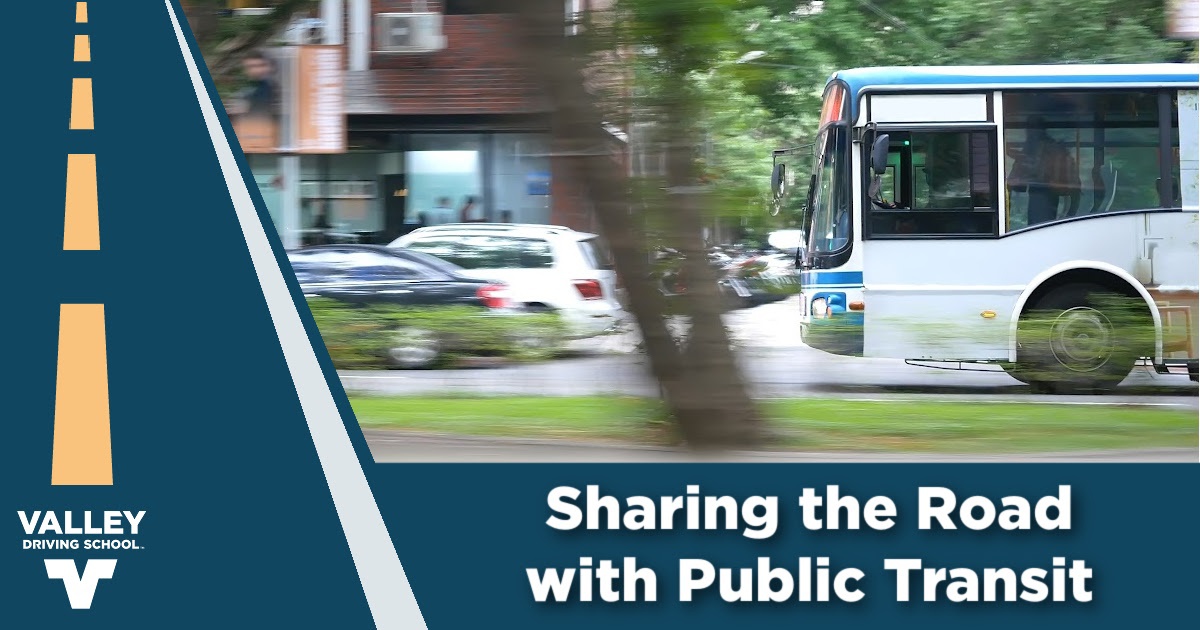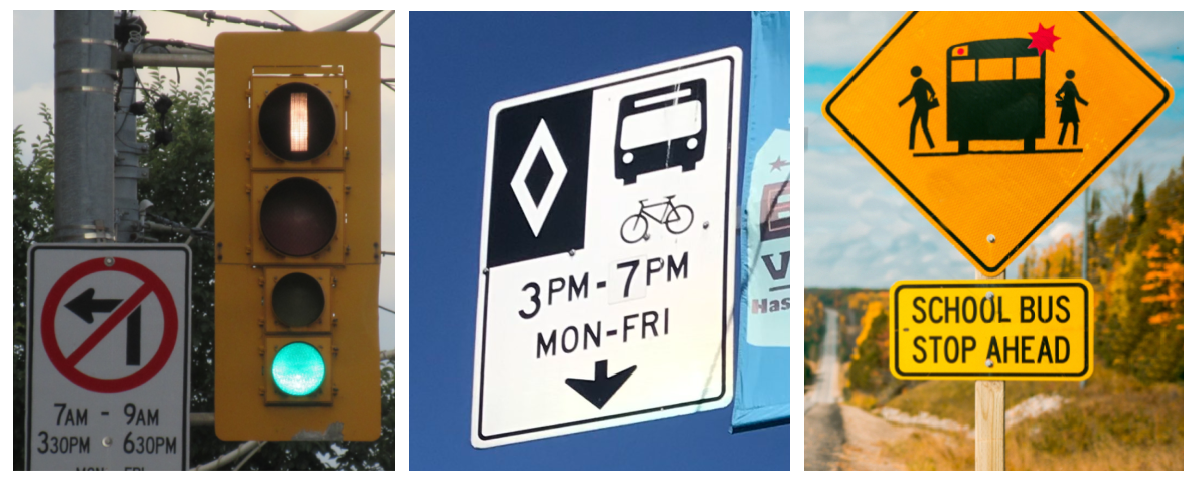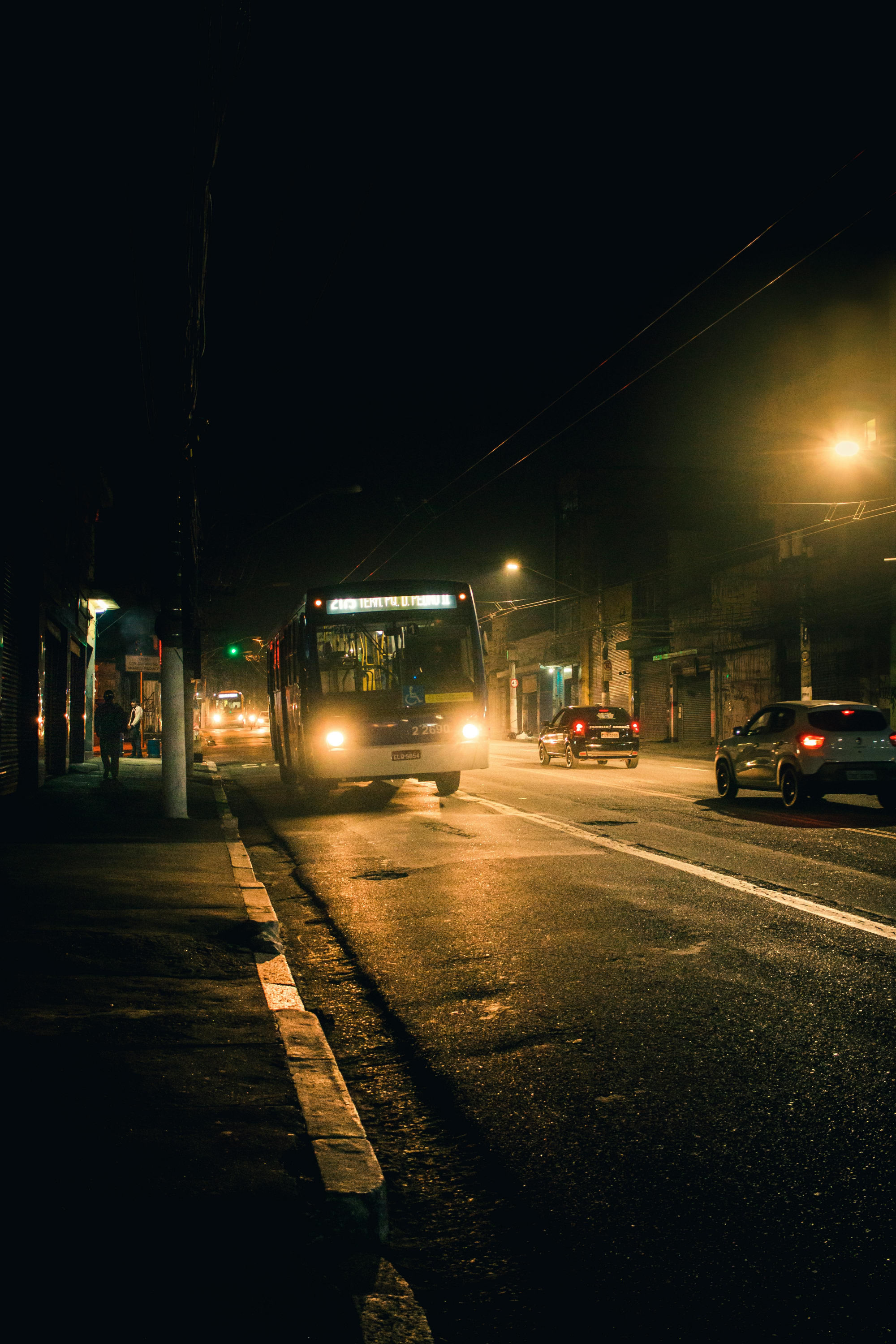Public transportation is a vital component of urban mobility, providing essential services to thousands of passengers. Knowing how to share the road with large transit vehicles can ensure safety and efficiency for everyone.

We’re here to answer some frequently asked questions for sharing the road with public transit, highlighting right-of-way rules, safety considerations, and the importance of being mindful of transit users.
Why is public transit important?

Public transportation plays a crucial role in our communities, offering efficient and sustainable mobility options. By sharing the road respectfully with buses, trams, and other transit vehicles, we contribute to a safer and more efficient transportation system for everyone.
Using public transit helps reduce traffic congestion, improving air quality and reducing greenhouse gas emissions. It also promotes economic growth by supporting businesses and creating jobs. Additionally, public transportation provides essential mobility for people who cannot drive, such as seniors, people with disabilities, and low-income individuals.
When should you yield to public transit vehicles?
In British Columbia, drivers are required to yield to public transit vehicles under specific circumstances. If you're on a road with a speed limit of 60 km/h or less, and a bus displays a yield sign while signaling its intention to re-enter traffic from a bus stop, you must yield. Even after yielding, drivers should pass buses with caution, considering the possibility of passengers entering or exiting.
The province is increasingly implementing dedicated lanes for public transit, particularly in larger urban areas like Metro Vancouver. These lanes are designed to improve travel times by providing them with a separate, uninterrupted path, which also reduces congestion and delays for private vehicles. This infrastructure improvement is a key component in promoting public transit use and reducing reliance on private vehicles.
Are there road signs specifically for public transit?
While public transit vehicles need to adhere to standard road rules, regulations, and signage, there are also specific signs used to indicate bus stops, bus lanes, and other transit-related information.
“Transit Priority” signs indicate upcoming bus lanes, transit signals, or other priority measures. These signs are usually accompanied by a special light, alongside typical traffic lights. “Bus Stop Ahead” signs warn drivers of an upcoming bus stop and the need to yield if necessary. These are typically used for school bus stops, as they are not always labelled otherwise. “Bus Lane” signs designate lanes specifically for bus traffic. These are often shown alongside restrictions, such as days of the week or times of day that the specific lane is in effect.

How can I be a safe driver around public transit vehicles and passengers?
Safety should always be a top priority when sharing the road with public transportation. Buses are large vehicles that require more space to maneuver and stop. Maintain a safe following distance to allow for sudden stops and turns. Always use your turn signals well in advance when changing lanes or turning. This helps transit drivers anticipate your actions and adjust accordingly.
Public transportation stops often attract a large number of pedestrians. Respect for public transportation extends to the passengers who rely on these services. When approaching a bus stop, be vigilant for passengers boarding or disembarking, as they may go around the transit vehicle and try to cross the road. Slow down and be prepared to stop if necessary. Drivers should never pass a stopped transit vehicle on the side where passengers are getting on or off.
Avoid blocking bus stops, as this can create a number of hazards. Passengers exiting the bus can't see oncoming traffic if their view is obstructed by a vehicle, and may be forced to walk around the bus and into traffic, increasing the risk of accidents. Blocking stops also causes traffic congestion and delays for other vehicles. If a bus is stopped at a stop, drivers can adjust speed and stopping distance to avoid blocking it when it pulls away.
What specific situations should I be prepared for when sharing the road with public transit?
Sharing the road with public transit requires extra attention in certain situations. When turning near buses or trams, exercise caution to ensure you have a clear view of oncoming traffic and avoid cutting off the transit vehicle. When passing a bus, maintain a safe distance and only proceed when it's clear to do so. Be mindful of emergency vehicles; if one approaches, yield the right-of-way by moving to the side of the road when possible. Adverse weather conditions can significantly impact visibility and stopping distances, so increase your following distance and exercise extra caution around buses and trams, especially at stops and crosswalks. Children and school buses require special attention. Always stop when a school bus has the red lights flashing and the stop sign extended.
–
Sharing the road with public transportation requires patience, understanding, and adherence to specific traffic rules. Public transit is an integral part of urban life, and cooperation between all road users is essential for the smooth operation of our roadways. By following these tips and staying aware of your surroundings, you can help ensure that everyone reaches their

